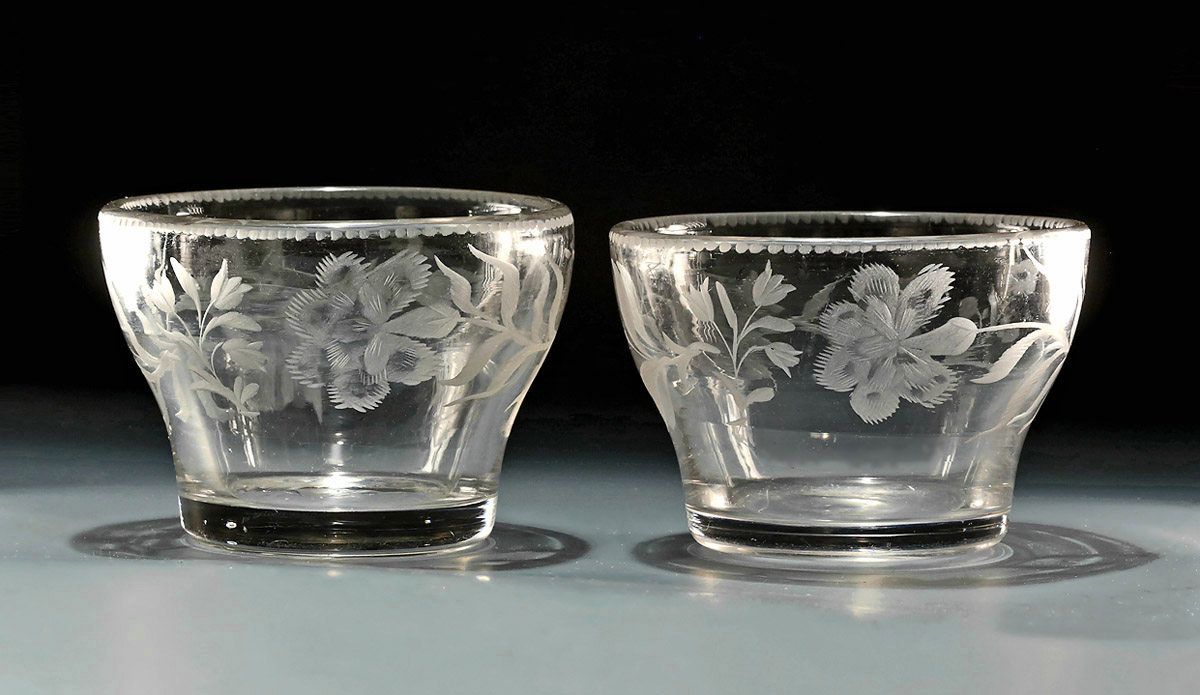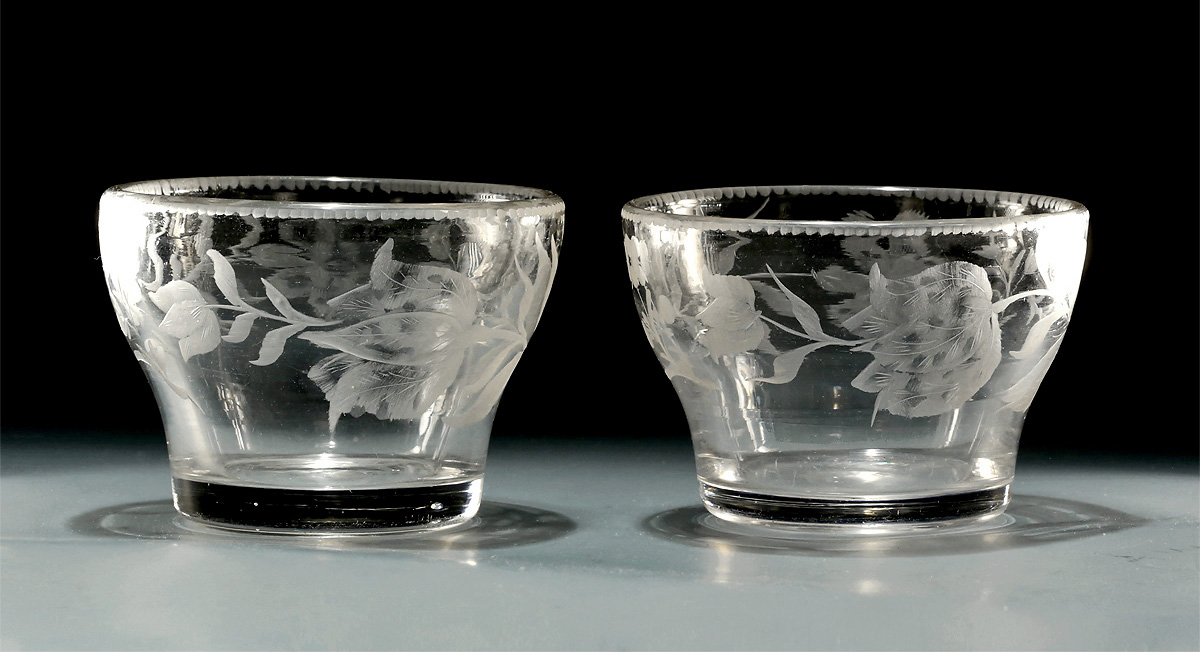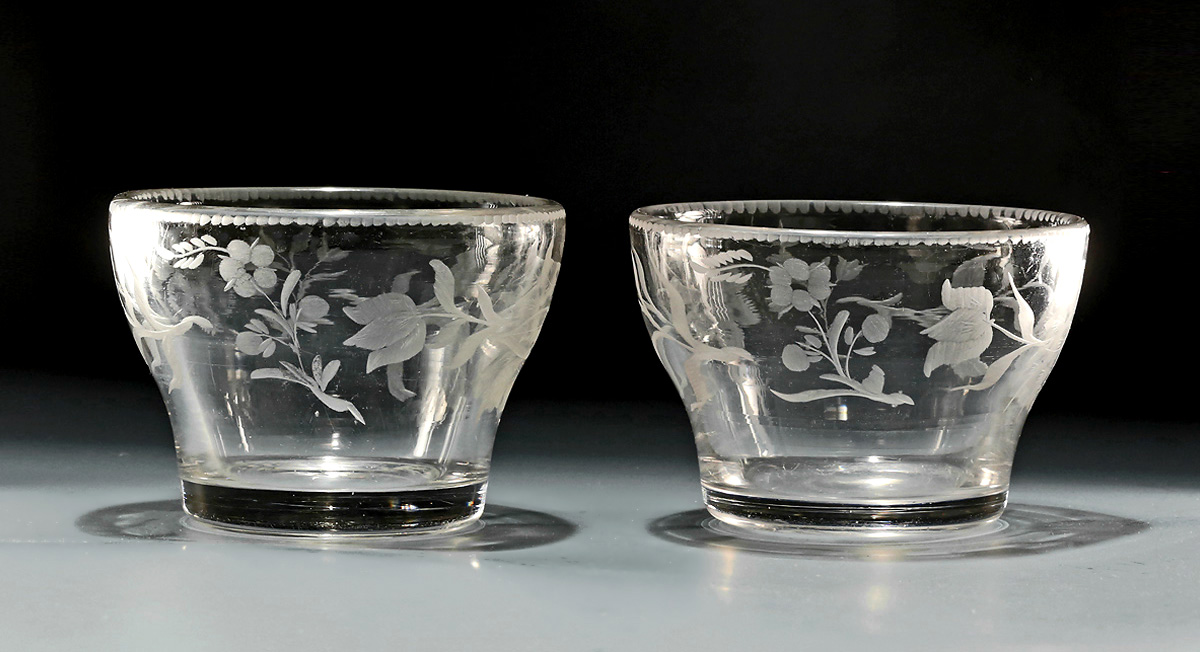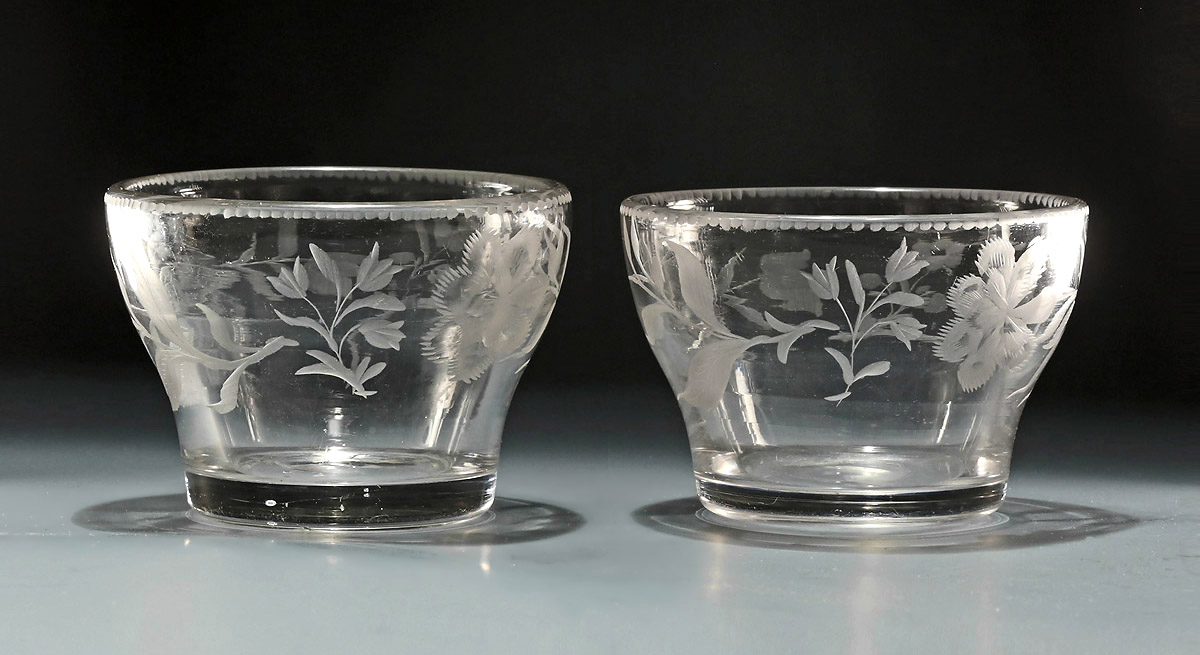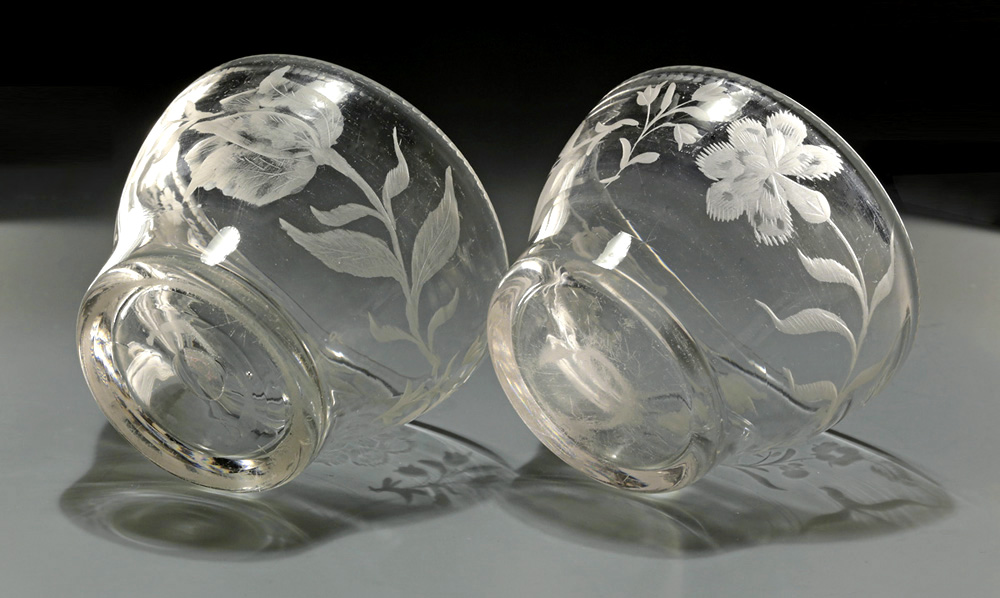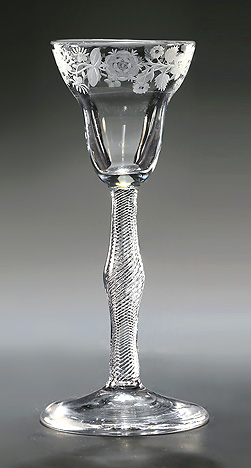* NOTES REGARDING THE FLORAL SYMBOLISM
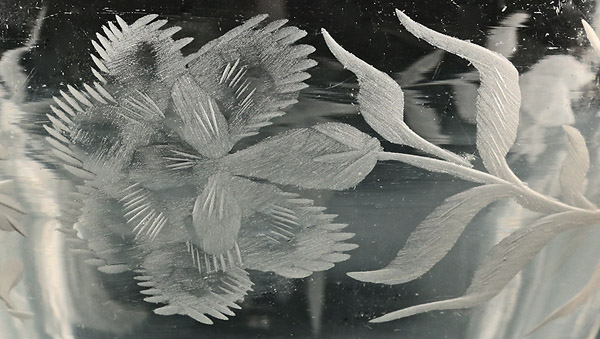
'Carnation' / 'Coronation' stands for the 'Jacobite Cause', and an 'Omen'.
1720 was a low point for the 'Jacobite cause'.
An unusually early blooming of carnations in the January
after Charles Edward Stuart's 1720 birth was regarded as 'a sign'.
And the tombs of both pretenders were strewn with carnations until 1898.
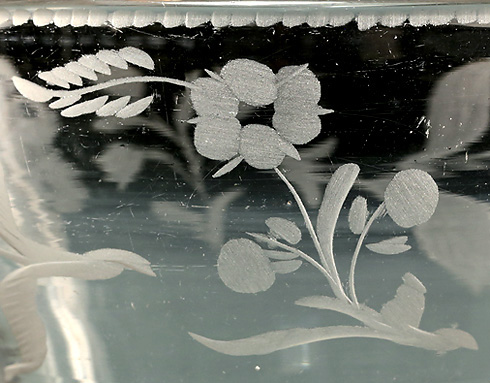
'Roses' : Interestingly, one bowl has a 5-petaled rose (as have 4 glasses examined by Geoffrey Sedon),
its pair having a 6-petaled Scottish Rose. Each has two buds, or perhaps two "apples", as some of the
horizontally engraved floral glasses have, the apple representing an "A" in the spelling of 'CHARLES'.
In either case, they represent the Prince Charles Edward Stuart, and his brother Henry Benedict Stuart,
Duke of York and 4th heir to the Stuart throne.
The white 5-petaled rose is also the symbol for the Duke of York, possibly in dual reference to Henry.
(Henry was ordained a priest on 1 September 1748, and made no further claim to the Stuart throne).
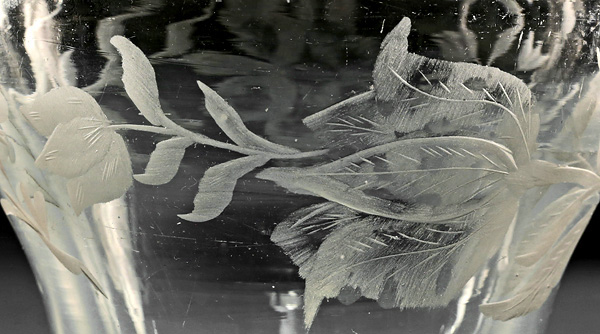
'Tulips', as Daffodils, are among of the first flowers to bloom in the spring,
thus becoming a Jacobite symbol referring "return of spring" (return of the Stuart reign),
and the accompanying new life.
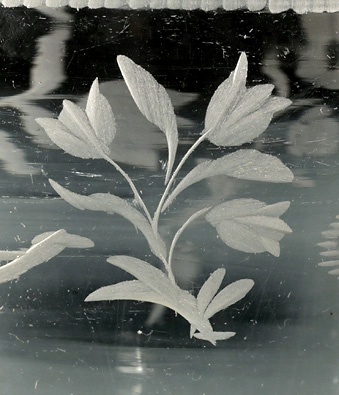
'Lily of the Valley' represent the 'Return to Happiness',
the three blooms in direct reference to
James III, Charles Edward Stuart (Bonnie Prince Charlie) and Henry Benedict Stuart.
A pair of wine glasses (Drambuie Collection) having similarly styled borders,
is illustrated in The Jacobites and their Glasses, Geoffrey Seddon, (2015), pl. 33,
with the following notation :
"With a little imagination the initial letters of the flowers can sometimes be made to spell 'Charles'".
(Carnation, Honeysuckle, Apples, Rose, Sunflower)
In Jacobite symbolism, the well known six-petaled rose represented the Stuart Kings,
the carnation "a coronation", the honeysuckle "Fidelity", and the sunflower "unswerving loyalty".
ABOUT THE BOWLS :
Mid-18th century English small glass bowls, either with or without underplates,
are seldom seen.
Engraved small bowls are far rarer- much less Jacobite.
It is often related that Jacobite supporters would toast their "King across the water",
passing a Jacobite-engraved wine glass over a bowl of water.
This custom is still sometimes observed at Jacobite celebrations in Scotland -
that is passing a wine glass over an adjacent small bowl of water.
Presumably these small Jacobite glass bowls served such a service,
in addition to "rinsers" for fingers. |
